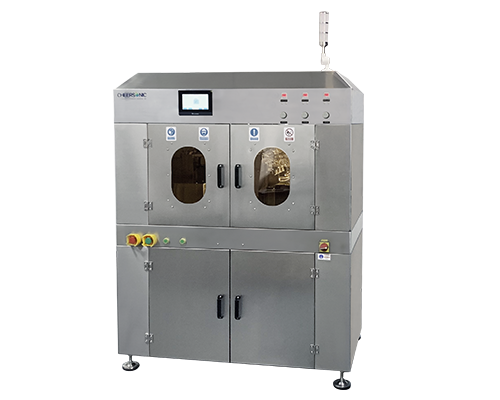Balloon Catheter Classification
Balloon Catheter Classification – Drug Balloon Catheter Coatings – Cheersonic
Balloons are the heart of balloon dilatation catheters, and their classification largely determines the classification of balloon catheters.
There are many classifications of balloons: according to the characteristics of the use of the balloon, it is mainly divided into three types: coaxial integral exchange type, quick exchange type and fixed guide wire balloon, and also includes specially designed balloons, such as: perfusion balloon, cutting balloon, etc. Balloons, double guidewire cohesive balloons, drug-loaded balloons, frozen balloons, etc.
According to the diameter of the balloon, it can be roughly divided into small balloon (2~5mm), normal balloon (5~12mm) and large balloon (≥12mm). Small balloons are generally used for coronary arteries, tibiofibular arteries below the pharyngeal arteries, and renal and vertebral arteries with small diameters; ordinary balloons are generally used for carotid arteries, renal arteries, iliofemoral popliteal arteries, etc., while large balloons are generally used for In the hyporenal abdominal artery, iliac artery and vena cava, etc.
In addition, according to the pressure resistance and shape retention ability of the balloon, it is divided into high-pressure balloon and low-pressure balloon.
According to the compliance of the balloon, it is divided into non-compliant balloon classification, semi-compliant balloon, and compliant balloon. The compliance of the balloon refers to the corresponding change in the shape or volume of the balloon for each increase of one atmosphere (atm) when the balloon is inflated, and is an indicator of the stretching ability of the balloon.
Semi-compliant balloons are mostly made of nylon materials and are mostly used for pre-dilation treatment and stent delivery; non-compliant balloons are mainly used for post-stent implantation expansion treatment and calcified lesion treatment.
There are three main types of balloon dilatation catheters
OTW Balloon Dilation Catheter
The OTW balloon dilatation catheter is also called the overall exchange balloon catheter. It is mainly used in patients with chronic total occlusion lesions, or when the patient needs to exchange guide wires. It can also be used for septal chemical ablation and transcentral cavity pressure measurement , Take blood. The main advantages of the OTW balloon dilatation catheter are two aspects of easy guidewire exchange and good tracking. Because the OTW balloon provides additional support, the guidewire can be advanced into the occlusive lesion and then used to perform distal motyping to more accurately determine whether the guidewire is truly in the true lumen. It is more commonly used to manage CTO lesions.
fixed wire balloon dilatation catheter
The notable feature of the dilation catheter is that there is a section of plastic soft guide wire at the top of the balloon dilation. The fixed wire balloon dilatation catheter is one of the commonly used catheter types with a small shape, so it has a higher lesion crossing rate, and it can produce better imaging effects, and usually only needs to be operated by a single person. Currently, it is suitable for use when encountering distal high-grade stenotic lesions.
perfusion balloon dilatation catheter
The design feature of this type of balloon dilatation catheter is that it has multiple side holes at its proximal and distal ends, so that when the balloon is inflated, blood flow can enter the distal region of the lesion through the balloon. Therefore, it has certain advantages to choose perfusion balloon dilatation catheter when dealing with complications such as coronary perforation and need continuous balloon pressurization.
In summary, the main common types of balloon dilatation catheters include OTW, fixed guide wire, and perfusion balloon dilation catheters. In addition, balloon dilation catheter manufacturers have also developed special types such as double guide wire balloon dilation catheters and cutting balloon dilation catheters.
In conclusion, there are various types of balloon dilatation catheters available to people.
Ultrasonic balloon spraying machine is a professional-grade balloon spraying equipment, which is aimed at the preparation of coatings on the surface of drug-eluting balloons or catheters and guide wires. The equipment is equipped with professional and special clamps, which can be clamped for complete balloons. It is also equipped with auxiliary functions such as drug dispersion, temperature, and humidity control to ensure the spraying effect of the drug coating. The equipment has the characteristics of precise dosage of medicine, uniform film layer and high utilization rate of medicine liquid. Cheersonic has extensive experience in the surface coating of implantable and interventional medical devices (such as drug stents and drug balloons), and can provide customers with complete solutions.
About Cheersonic
Cheersonic is the leading developer and manufacturer of ultrasonic coating systems for applying precise, thin film coatings to protect, strengthen or smooth surfaces on parts and components for the microelectronics/electronics, alternative energy, medical and industrial markets, including specialized glass applications in construction and automotive.
Our coating solutions are environmentally-friendly, efficient and highly reliable, and enable dramatic reductions in overspray, savings in raw material, water and energy usage and provide improved process repeatability, transfer efficiency, high uniformity and reduced emissions.
Chinese Website: Cheersonic Provides Professional Coating Solutions


